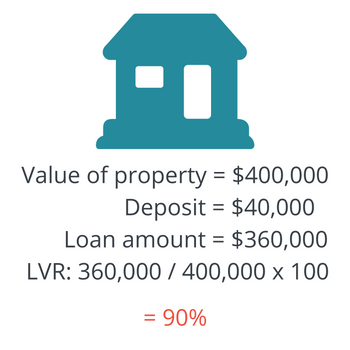 As a property investor you've probably heard of LVR.
As a property investor you've probably heard of LVR.
LVR is an acronym that stands for Loan to Value Ratio and is the proportion of money you borrow compared to the value of the property.
It is expressed as a percentage.
LVR is used by lenders to help assess the risk factor of borrowers before deciding whether to approve a loan.
Keep reading to learn everything you need to know about LVR.
How you can calculate LVR
This example will show you how to calculate the LVR of a property that is valued at $400,000 with a deposit of $40,000.

A LVR of 80% is considered to be a benchmark for many lenders, above which you may have to pay extra fees, including Lenders Mortgage Insurance (LMI).
What is LMI?
Whenever a lender loans a customer money for a property, there is a risk that they wont get the money back if the customer cannot afford the repayments.
LMI protects the lender in the event of a customer defaulting on a home loan.
Although the lender has the property as security, there is a chance that the value of the property could decline, so it would not cover the value of the loan if the lender had to sell it.
If that situation arises the lender will be covered by LMI.
The LVR will affect you as a property investor
Lenders place a large emphasis on the LVR.
Not only will it influence whether or not you will have to pay LMI, but it can also impact the interest rate you will be paying on your loan.
The lower the LVR, the lower the lender's risk, which can result in the customer receiving other benefits such as lower interest rates or reduced fees on their loan package.
If you are a subscriber with Real Estate Investar our Property Analyser tool will give you immediate access to your financial KPIs, including surplus equity, borrowing power, debt service ratio (DSR) and LVRs.
.png)




.png?width=200&height=100&name=RE%20Investar-Logo-MRI_Colour%20web%20229x115px%20(1).png)